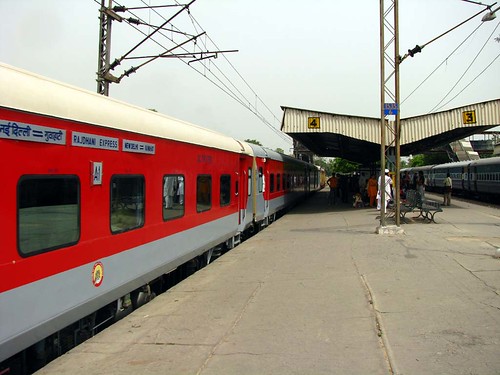Texan Eagle
Conductor
- Joined
- Aug 25, 2011
- Messages
- 1,705
Hampi Express Accident Leaves 25 Dead
"At least 25 passengers were killed, 16 of them charred, and 43 injured when the Bangalore-bound Hampi Express rammed into a stationary goods train after its driver apparently overshot the signal near the station in Penukonda in the wee hours on Tuesday. The impact of the collision that took place at 3:15 am was such that four coaches of the express train derailed and one of them caught fire near Penukonda station in Andhra Pradesh."
- - -
It is not clear yet whether the driver overshot a red signal and drove the express train into the stationary freight train ahead or the point malfunctioned and instead of taking the express train to a siding track, allowed it to carry on on the mainline that was occupied by the freight train.
The diesel locomotive of WDP-4B model, an Indian derivative of the EMD GT46 model seems to have suffered almost no damage and stood still while the passenger cars behind it, not built as strong as the locomotive, crashed into the engine and into each other.
"At least 25 passengers were killed, 16 of them charred, and 43 injured when the Bangalore-bound Hampi Express rammed into a stationary goods train after its driver apparently overshot the signal near the station in Penukonda in the wee hours on Tuesday. The impact of the collision that took place at 3:15 am was such that four coaches of the express train derailed and one of them caught fire near Penukonda station in Andhra Pradesh."
- - -
It is not clear yet whether the driver overshot a red signal and drove the express train into the stationary freight train ahead or the point malfunctioned and instead of taking the express train to a siding track, allowed it to carry on on the mainline that was occupied by the freight train.
The diesel locomotive of WDP-4B model, an Indian derivative of the EMD GT46 model seems to have suffered almost no damage and stood still while the passenger cars behind it, not built as strong as the locomotive, crashed into the engine and into each other.






























































